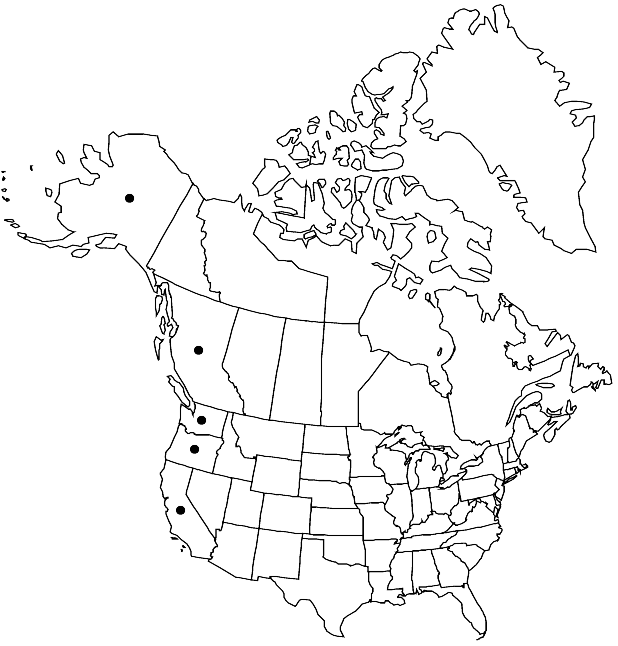Cardamine occidentalis
Fl. N.W. Amer., 50. 1897.
Perennials; glabrous or hirsute. Rhizomes (tuberiform, fragile), ovoid or globose at base of stem, 3–10 mm diam., (fleshy). Stems (simple from base), erect to ascending, (not flexuous), unbranched or branched distally, 1–5 dm, glabrous or pubescent proximally. Basal leaves not rosulate, pinnately compound, (3 or) 5 (or 7) -foliolate, 2–10 cm, leaflets petiolulate or subsessile; petiole 0.5–6.5 cm; lateral leaflets petiolulate or subsessile, blade similar to terminal, ovate, smaller, margins entire; terminal leaflet (petiolule 0.03–0.18 cm), blade orbicular to broadly ovate or subcordate, 0.5–2 cm × 7–25 mm, base cordate to rounded, margins entire or repand, (surfaces glabrous). Cauline leaves 3–7, (3 or) 5 or 7-foliolate (middle ones 5 or 7-foliolate, smaller distally, becoming 3-foliolate), petiolate; petiole 0.5–3 cm, base not auriculate; lateral leaflets similar to terminal, smaller; terminal leaflet blade obovate to oblanceolate, 0.5–2.6 cm × 3–13 mm, margins shallowly toothed, entire, or repand. Racemes ebracteate. Fruiting pedicels divaricate-ascending, 7–18 mm. Flowers: sepals oblong, 1.7–2 × 1–1.2 mm, lateral pair not saccate basally; petals white, oblanceolate, 4–6 × 1.5–2 mm, (not clawed); filaments: median pairs 2–2.5 mm, lateral pair 1–1.5 mm; anthers ovate, 0.3–0.5 mm. Fruits linear, (torulose), 1.5–3.3 cm × 1.7–2.2 mm; (valves glabrous or sparsely pubescent); ovules 18–40 per ovary; style 0.5–1.5 mm. Seeds brown, ovoid, 1–1.6 × 1–1.2 mm. 2n = 64.
Phenology: Flowering Apr–Jul.
Habitat: Muddy grounds, lake margins, shallow streams, meadows
Elevation: 150-1500 m
Distribution

B.C., Alaska, Calif., Oreg., Wash.
Discussion
Selected References
None.
Lower Taxa
"equal" is not a number."elongated" is not a number."thick" is not a number."dm" is not declared as a valid unit of measurement for this property.